Aquaculture Project Update
Montana on a Mission = Aquaculture Project Report
February 5th, 2010
Since 2004, Montana on a Mission has come along side of the people of Calunasan Sur and helped them with some of life’s basic needs: like drilling a well for fresh water or fixing a leaky roof or pouring a concrete floor instead of a dirt floor. In 2008, we had a chance to bring some business opportunities. For the trip we brought a wide range of business ideas that included: gardening to provide food for the market, sewing to make items for tourists, woodworking to make furniture and aquaculture to provide fish to sell and also to eat. The aquaculture project is the focus of this article.
To say that this was God’s project is somewhat of an understatement. About the only thing that I did was to show up. Many of the ideas that I had about how things should go were replaced with ideas that were cheaper, more efficient and frankly, better. For instance, I started with the idea of two fiberglass tanks at each home so that we could get it done quickly. Tanks would have fish in them by the end of the day and we can get them all done in 10 days. Total cost per house would be around $1,000 which really wouldn’t be too much for a home based fish hatchery that could feed a family and provide some income. But, what we ended up with was one large concrete tank which held just as many fish and was much more socially acceptable (there were some wealthy landowners around the area that had these concrete tanks so it was kind of a status symbol) and the final cost built on site loaded with fish and three month’s supply of fish food was around $175.00.
Construction of aquaculture tanks for Calunasan Sur.
Once we found out local market prices for fish and estimated the weight of fish we could grow in the tank, we figured they could earn as much as P9,500/ year with 3 crops per year or about $245.00. In bigger terms it could add about 25% to their income. Invariably though we always heard this phrase in addition to the income – if not more important than income – was “also for consumption.” Tilapia is very good to eat and only a few people in the barrio can afford to buy these fish at market. All in all we were very pleased with the start of the program. We were also reassured when we saw the enthusiasm and excitement that surrounded these little fish tanks. One of our new “hatchery managers”, Maximo, told me that he would whistle to the fish every day until they knew his voice and came to him at feeding time. He was grateful to be chosen for the project and I have no doubts that he will be successful. The guy is 72 years old and basically put me to shame when it came to mixing the concrete for the tanks. Additionally, we continued our philosophy of Baya Nehan or “helping each other” so that Maximo and Frankie helped with Maximo’s tank and two other guys helped Frankie build his tank and so on which promotes a spirit of community.
Tilapia rearing tank with Maximo on the right. Finished tank with the MOM team.
The best part of it all was seeing God at work. Even though the way I thought things should go were never really considered, I was blessed because I took a step of faith and really wanted to help. During that trip, we built three concrete fish tanks and started raising fish in them. The tanks were quite a hit with the residents.
We took a second trip in October of 2008 to visit the families with fish tanks and see if there were additional recommendations we could make to improve the methods people were using to grow the fish. While on that trip, we discovered that the government sponsored fisheries resource office or BFAR (Bohol Fisheries and Aquatic Resources) would provide assistance by way of consulting to help us refine our methods and provide free fingerling tilapia to our fish ponds! We also discovered one local resident who had observed our tilapia tanks and made his own on his property built out of a spring. Arsenio simply dug a pond around his spring and took some of the fingerlings from the BFAR folks and grew them in his pond. (See pictures below) Our trip took us to all the families that received the concrete tanks, which had grown to four. Each one had refined their growing methods and produced many wonderful fish to eat. We also discovered that selling the fish was not quite as fun as eating them and most residents had chosen to eat the palm-sized fish for diner. We found while we were there that the whole fish is eaten and provides a wonderful source of protein as well as calcium and minerals. It is a staple in the diet along with the rice. We were pleased to see everyone still enthusiastic about the project. I attended a short meeting while I was there near the burungey hall (sort of like a city hall) in which a few residents formed a co-op to grow fish in the more traditional manner of pond culture. The pond was very small and was used to investigate whether fish could be grown successfully in this way.
Hand dug pond from a resident of the barrio. 500 fish were harvested after 5 months.
After five months of hard work by a few individuals, around 2,000 fish were harvested weighing about 325 pounds and the co-op made 12,800PHP (or about $270US). Additionally, some fish were taken by each family to eat. Again, this provides a very reasonably priced source of protein for people that have a difficult time affording something so typically high priced. To me, it is very exciting to see how far things have come.
Harvesting Tilapia from the new community pond.
In January of 2010, we again visited the fish projects and were consulting on an even larger community pond. All of the families with concrete ponds had refined their methods quite well and were growing fewer fish. Over the past two years, it was discovered that they could not grow the amount of fish we had projected simply due to the overall cost of water. Even with the quantity of fish reduced, families were still able to grow enough fish to provide valuable meals for the family. One family that was not concerned with water dug out an earthen pond below the concrete pond and drained the concrete pond into the earthen pond. She now produces three times the number of fish! As you look at the pictures below, you can see the ‘lower’ pond. Aming is the owner and she told me that her youngest son will go fishing each day after school to catch the evening meal. I asked her how they determine when a fish is the right size to eat (an American perspective) and she answered (in Filippino perspective) that size was not the determining factor; it was whether each person needed one fish or two for the meal! Quite a difference in perspective, don’t you think? The fish in the picture below on the right was enough for one person for one meal.
Aming is shown with her two fish ponds. Aming’s husband with tonight’s ‘diner for one.’
Our goal of consulting on the community pond was also successful. On Saturday we met with Mum Jeannie Mayol, the representative for BFAR, to do a walk-through of the new area for the pond. Originally, we would need to pump water up a small side-hill to the coop pond and reuse the water in the much larger community pond. After some time and discussion, we recommended that the spring channel be widened to accommodate up to 5,000 fingerlings that could be harvested every 6 months. The projection would be for up to 600 pounds of fish to be harvested twice per year! Once Jeannie and I agreed on the proper course of action, (which was actually a suggestion from the local folks), the barrio was to write a resolution to the mayor to provide a backhoe and operator to develop the pond. So, once again our costs are very minimal and only include fish food. Perhaps one day we can provide a scholarship to one of the college students to attend a community college and they could learn aquaculture as a profession. If you are touched by this project and would like to donate through the website, our projected costs for fish food is about $25.00 per month and a scholarship for an aquaculture student (tuition only) is $250.00 per year on a four year program. For
Co-op pond post-harvest Spring channel to be developed for fish.
only $1,000.00, we can teach someone to grow fish properly and they can spread this program around the island! Visit our home page to donate and know that 100% of your donation ends up helping those on the ground! Thank You and God Bless!

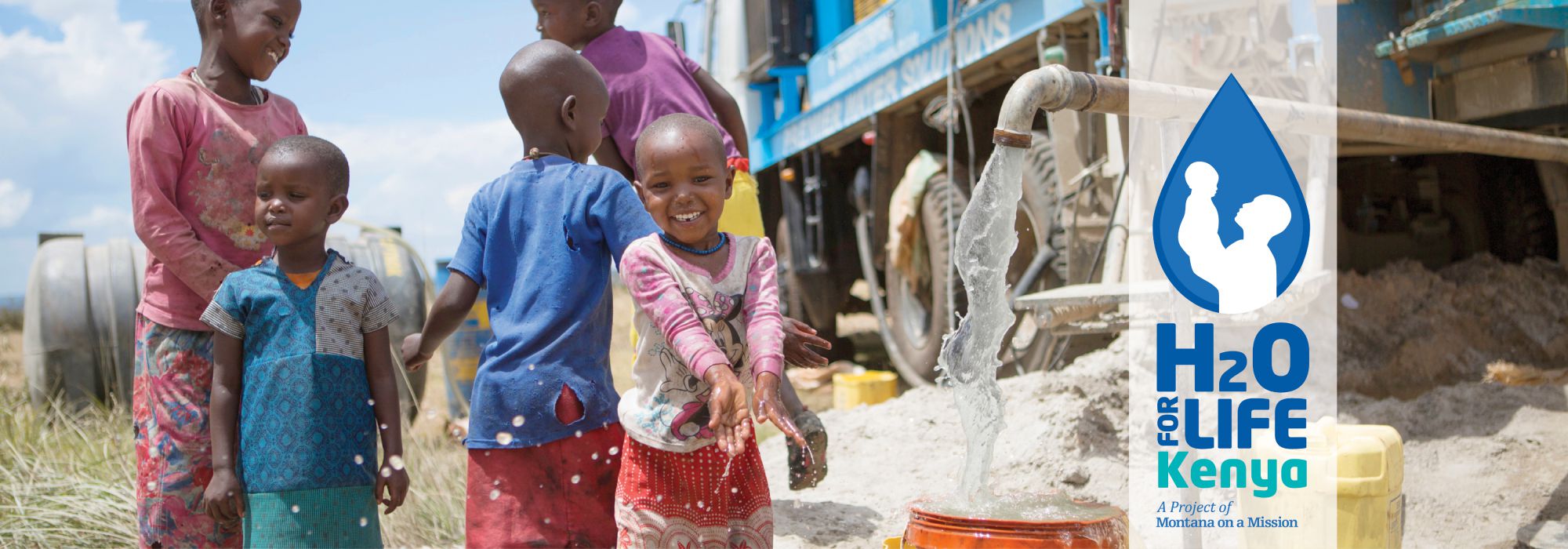
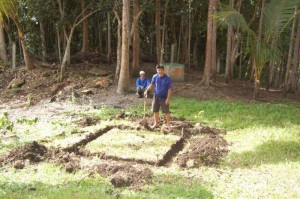
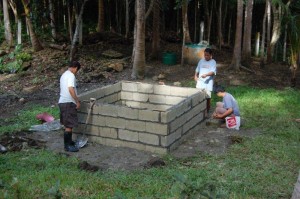
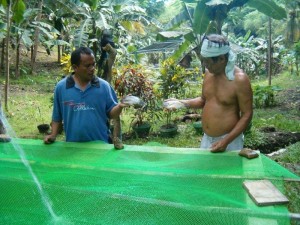
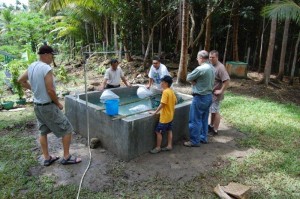
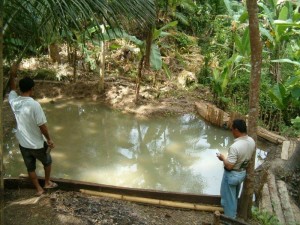
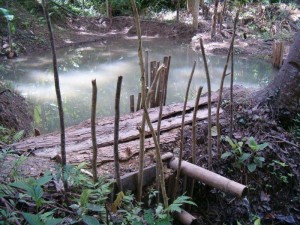
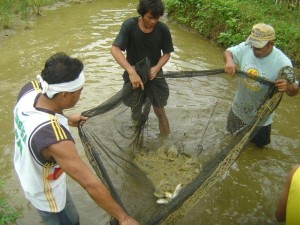
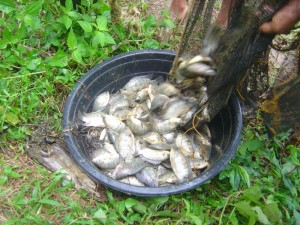
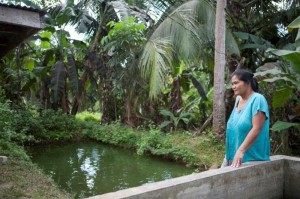
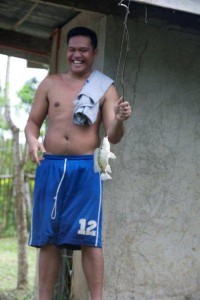
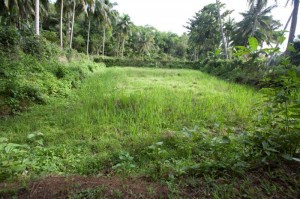
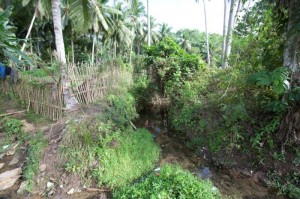
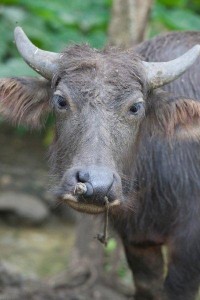
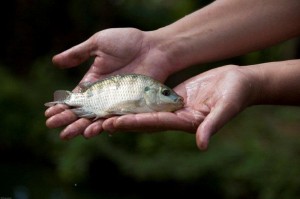
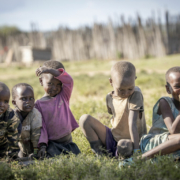
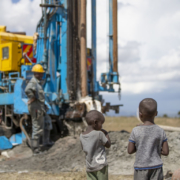

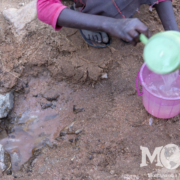






May you never grow weary of helping others. God bless you all !
Guys that’s an awesome thing you’re doing!
Keep at it and God bless.
just a couple of things I noticed – “baya nehan” as you wrote is actually spelled BAYANIHAN, and it derives from the root word BAYAN which means town/village, so in essence it means a task being undertaken by collective community participation; another is BARANGAY (which you wrote as “burungey”) it is the smallest government adminstrative division in the Philippines, equivalent to a village/barrio. Well, I thought this might help a little in case you are planning to write a book, and i encourage you to pursue this because there really is a dearth of materials documenting projects of this nature – especially on the local ADAPTATION of technologies. it would help lessen the confusion in terminologies, I hope.
Thank you and more power to you.